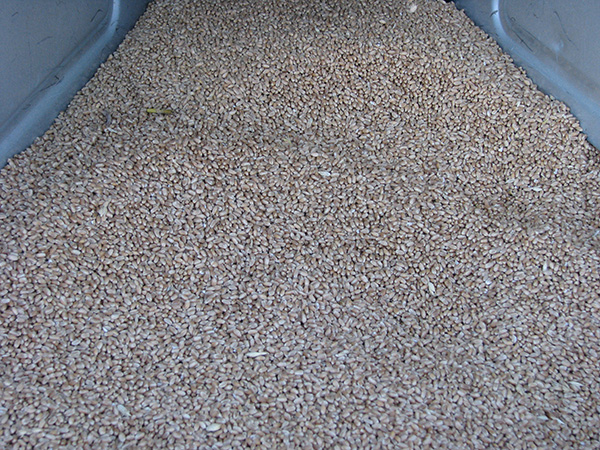New Zealand imports about 70% of its milling wheat, the bulk, 90%, of this going into the North Island is sourced from Australia.
As farmers move on from one of the most difficult harvest seasons, New Zealand must address its future food security, NZ grain and seed trade association (NZGSTA) general manager Thomas Chin says.
“All that is going on both in NZ and globally is exposing a very strong case for industry and others to think about NZ food security and security of the supply chain,” Chin said.
“It’s been a tough one for farmers getting the crops harvested and the challenges don’t stop there, right across the industry every sector is counting the costs.”
He said NZ is exposed to volatility and global pricing and must be more self-reliant.
“This is about resilience and a timely reminder to look at NZ-grown, NZ-produced – it’s not just a matter of ploughing up a few more acres, there’s a few more challenges for all of industry to ponder,” he said.
NZ grains and pulses chair Ed Luisetti said the ongoing industry challenges from this season’s poor harvest are still being evaluated.
What is glaringly obvious is that milling wheat will be in short supply.
“Last year milling wheat prices offered resulted in 50% of the normal area being sown, then we had a wet season and wet harvest resulting in germination and poor grain quality, with 50% of milling wheat harvested not meeting the quality standard requirements rendering crops worthless for the mills,” Luisetti said.
“The result is we have 25% of what we normally do in the South Island, where the bulk of the milling wheat is produced.”
If NZ wants to, and it will need to, import the shortfall, then it will be competing in a fierce global market impacted by the Russia-Ukraine conflict.
NZ does not normally import from the Black Sea region but with global sanctions and ships unable to get into ports, countries that would normally get grain from the region are seeking to secure supply elsewhere.
“Prices are skyrocketing and NZ is now competing with countries that are swarming regions, such as Australia, to buy grain,” he said.
“All of this is going to lead to considerable pain in the bread aisle and shopping trolley generally.”
The risk of geo-political uncertainties is also likely to impact on NZ’s seed breeding programmes.
“We have world-leading wheat breeding programmes, including specialist varieties with reduced gluten content and varieties especially bred for climate change resilience,” he said.
“These breeding programmes are at severe risk if NZ continues to import wheat.”
Up until this season, the South Island has been very close to reaching self-sufficiency with the Eat NZ grains initiative. but poor contract pricing and dire harvest has put a spanner in the works.
NZ imports about 70% of its milling wheat, the bulk, 90%, of this going into the North Island is sourced from Australia.
“There could be a surge in interest in growing milling wheat (for the 2022-23 harvest) but that will very much depend on pricing contracts,” he said.
The NZ flourmilling association says flour is used as the basis for many cereal products, including bread, pasta, pastries, cakes and biscuits, while it also plays an important role as an independent ingredient and component in sauces.
Most wheat is purchased on a protein basis as this dictates the potential end use of the flour.
With a lot of rejection of sub-standard grain on arrival at mills this year it will be interesting times, association chair Mark Lawrence says.
“NZ mill wheat will be in short supply and bakers will have to look at adding bread improvers to increase the quality of flour,” Lawrence said.
It will push prices up and inevitably that can’t be absorbed by the mills, so it will have to be passed on to the consumer.
Luisetti said there is also a looming shortage of grasses and clovers in the NZ retail market.
“We know there have been some clover crops that haven’t and won’t be harvested and germinations of some varieties will deem them unsuitable, which will impact on reduced exports,” he said.










